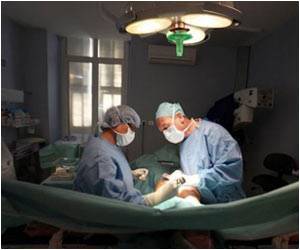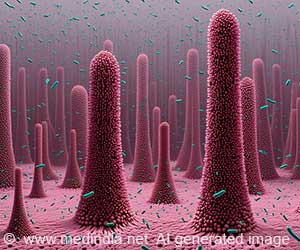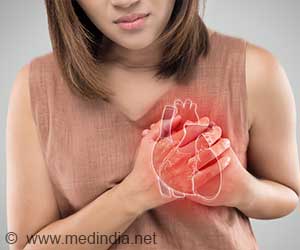The National Family Health Survey (NFHS) 2015/16 in India is the fourth nationwide survey since 1992-93 to assess the status of health and family welfare and initiate suitable measures.
- The National Family Health Survey is a large-scale nationwide survey to determine the prevalent health and socioeconomic situation of the population so that the success of government welfare schemes can be assessed and find out about emerging health and social issues
- For the first time, the National Family Health Survey of 2015/16 has gathered data from all the 29 states and 7 union territories; the results of the various health indicators are available district wise for all the 640 districts in the country as per the 2011 census
- The latest survey has attempted to cover non-communicable diseases by including for the first time measurement of blood pressure and random blood glucose, in addition to estimating height weight and hemoglobin
Key Facts about NFHS 2015/16
- This is the fourth survey conducted since 19912-93; participants included a representative sample of the population from all states and union territories
- The survey was funded by the United States Agency for International Development (USAID), the Bill and Melinda Gates Foundation (BMGF), the United Kingdom Department for International Development (DFID), the MacArthur Foundation, UNICEF, UNFPA, and the Government of India. The HIV component of the survey was supported by the National AIDS Control Organization (NACO) and the National AIDS Research Institute (NARI), Pune
- Results were provided for the country as a whole, for the individual states and union territories, and district levels as well as rural and urban areas in eight cities
- Total number of people surveyed included 699,686 women aged 15-49 and 112,122 men age 15-54
- Information was gathered about the house such as the type of house, access to water, sanitation, electrification and type of cooking fuel used
- Awareness of HIV, HIV prevalence, sexual behavior were surveyed and all eligible participants were offered free HIV counseling and testing
- Women were questioned about literacy, access to family planning, age at marriage, reproductive history, menstrual hygiene, and access to health care, participation in key decisions of the family, employment and domestic violence
- Participants were questioned about alcohol and tobacco use and for the first time blood pressure and random blood glucose measurements were done in this survey to assess non-communicable diseases such as hypertension and diabetes
TOP INSIGHT
The results of the 2015/16 National Family Health Survey indicate overall improved nutrition and health among women and children, lower mortality rates, and improved access to drinking water and electricity. However, women empowerment is still lacking.
Read More..
Key Findings of the NFHS 2015/16
- Nearly 30% of the Indian population is under 15 years and 10 percent of the population is
aged over 60 years - Most households have access to drinking water and electrification; however, around 40% households have no toilets and have to defecate in the open and only 44% households had access to clean cooking fuel
- More than half the households have pucca houses (houses made with high-quality materials throughout, including the floor, exterior walls and roof) and 35 percent have semi-pucca houses.
- Almost 70% of households have an Aadhar card and nearly 90% households have bank or post office account
- Literacy among men was higher than women and the proportion of women employed was significantly lower compared to men. Only half the population has not finished the average number of years of school education
- The average age of first marriage for women is 18.6 years and 24.5 years for men; incidence of consanguineous marriages is high in all southern states except Kerala
- Improved access to antenatal care of pregnant women and significant higher hospital deliveries compared to an earlier survey in 2005-06 and double the rate of cesarean sections
- Infant and child mortality has fallen since the last survey
- Over 20% percent of women and about 20 percent of men between 15 to 49 years are thin; a similar percentage is overweight or obese
- Tobacco and alcohol use is significantly higher in men aged 15-49 years compared to women
- Prevalence of hypertension in women and men was 15% and 11% respectively; random blood glucose was higher than 140 g/dl in 6% of women and 8% of men respectively
- Health examinations coverage among women such as breast examination, oral cavity or cervix examination was not very impressive
- The proportion of deaths due to non-medical causes (accidents, poisoning, violence, murder, or suicides) is higher among men (12%) than women (8%)
- Only 22% percent of young women and 32% of young men age 15-24 have proper knowledge about HIV/AIDS or its prevention.
- Nearly 35% men between 15-24 years reported having higher-risk intercourse (sex with a
non-marital, non-cohabitating partner) in the 12 months prior to the survey, compared with 2% women in the same age group. - HIV testing has improved markedly since the last survey; the prevalence of HIV in urban areas is double that in rural areas
- Prevalence of HIV is low between 15-24 years and increases thereafter up to 39 years and again declines
- Women’s empowerment is still lacking with the proportion of women who work (31%) or are allowed to participate in health decisions and key family decision making (35%) still remaining quite low
- Women are still subject to domestic violence both physical, emotional and sexual violence from the spouse although it has decreased marginally since the previous survey; the percentage of women seeking help following spousal violence has dropped from 24% previously to 14% currently.
References:
- National Family Health Survey 2015 - (http://vikaspedia.in/health/health-directory/national-family-health-survey-2015-16#section-6)
- The National Family Health Survey: 2015-16 - (https://dhsprogram.com/pubs/pdf/FR339/FR339.pdf)
- A review of national health surveys in India - (https://www.who.int/bulletin/online_first/BLT.15.158493.pdf)
Source-Medindia
 MEDINDIA
MEDINDIA


 Email
Email





